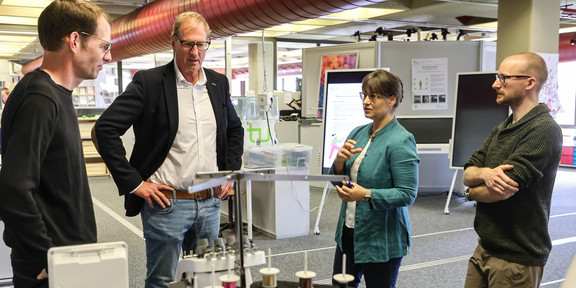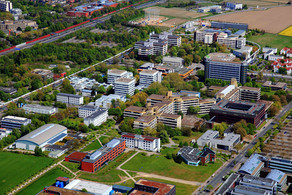Today, libraries can do much more than books
- Nachhaltigkeitsbüro

Who doesn't know this building on the North Campus of the TU Dortmund University right next to the Mensa Bridge? The university library. It offers about 1.2 million printed journals and books, access to 0.5 million e-books and various other digital libraries and databases. It thus makes a significant contribution to the provision of knowledge on the TU Dortmund campus.
In addition to this provision of knowledge access, the University Library is an indispensable learning and working place on campus. Together with the Emil-Figge-Bibliothek, about half of all available workstations at the TU Dortmund are concentrated here. With a good 1500 student workstations, the libraries offer space for independent learning or also joint work in groups.
These library-typical offers are now being expanded by participatory offers. For example, the AStA has a book shelf where old books can be exchanged for new ones, the Hybrid Learning Center (HyLeC) is a place to learn key digital skills, and there is a seed library where seeds can be exchanged with each other.
Hybrid Learning Center
The Hybrid Learning Center (HyLeC) specifically expands and promotes key digital competencies for all students at TU Dortmund University. It provides a wide range of technical resources and media. The goal is to give all students the opportunity to learn about, with and on technology. Technology is made accessible to all and largely free of barriers, the possibilities and potentials of technology are demonstrated, appropriate assistance is provided for conscious use, and students are encouraged to try things out for themselves.
Seed library
Since March 2022, there is a sustainability corner in the university library of the TU Dortmund. In addition to the relevant literature, there is also a seed library where anyone interested can exchange and borrow seed that is resistant to seeds. Borrowing in this case means that the yields of the seeds are returned to the cycle of the seed library in the form of new seeds in order to be able to maintain diversity over a long period of time.



